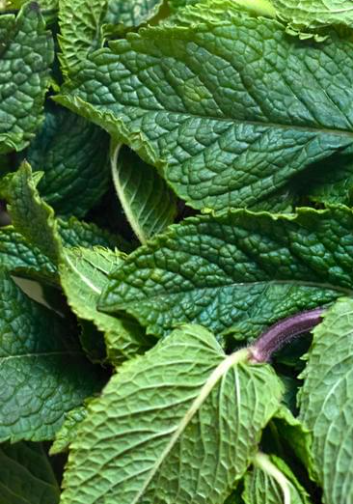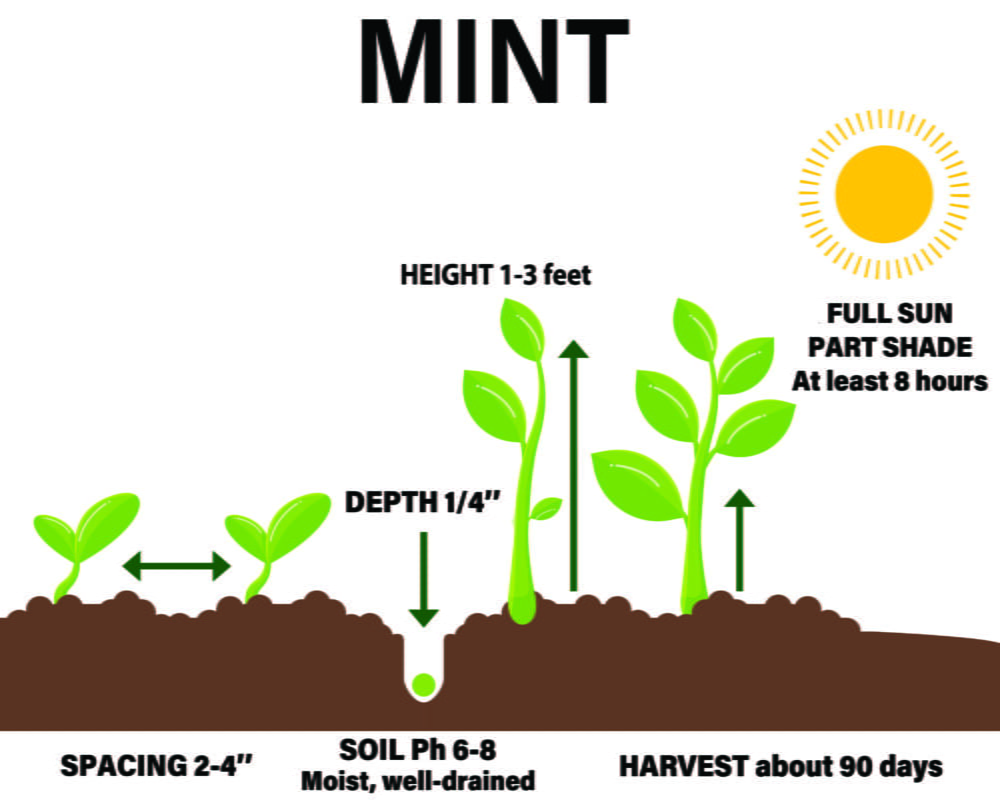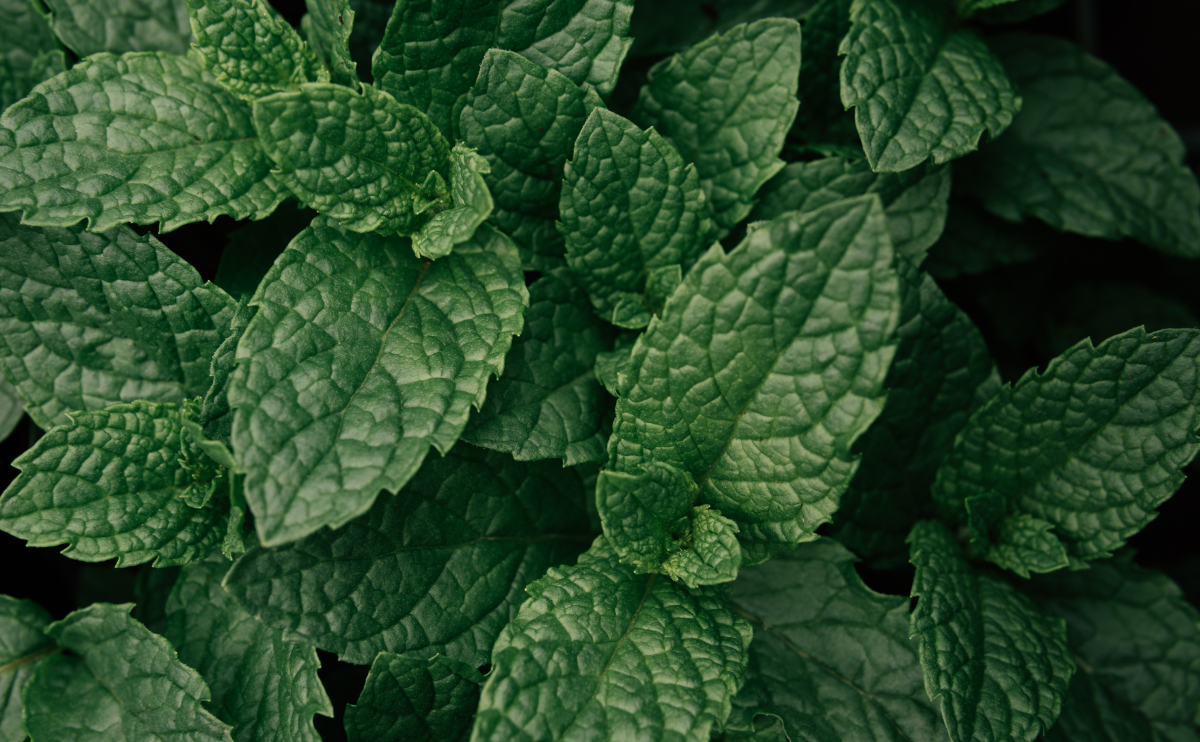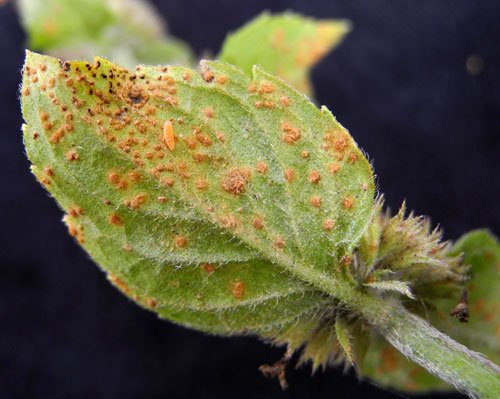Peppermint (Mentha × piperita) was initially considered to belong to its own species. However, it was later realized that the herb was, in fact, a hybrid between spearmint (Mentha spicata) and watermint (Mentha aquatica).
This amazingly aromatic herb is one of the oldest herbs used for ritual, culinary, and medicinal purposes. Today it is used for aesthetics, being cherished for its lovely refreshing fragrance and taste.

| Botanical Name | Mentha × piperita |
| Common Name | Peppermint |
| Plant Type | Herbaceous perennial |
| Mature Size | 1-2 ft. wide, 1-2 ft. tall |
| Sun Exposure | Full sun |
| Soil Type | Adaptable except extremely dry |
| Soil pH | Adaptable |
| Bloom Time | July to August |
| Flower Color | Pink |
| Hardiness Zones | 5-9 |
| Native Area | Europe |

When to Plant?
This will be determined by your planting zone. There is a final frost date for each area. As a result, you can plan your gardening activities around this date. Check our Frost Dates Across North America: First & Last Frost Dates Chart. However, the date will not be the same for every plant.
How to Plant
To plant mint seeds, you need from 0.25 to 0.5-gallon pot or a large container at least 6″ deep to ensure that the mint shoots can grow 4″ apart.
A container for growing mint must necessarily have drainage holes.
Plant mint in well-drained, fertile soil with direct sunlight for at least 6 – 8 hours a day.
For spring planting, mint seeds can be started indoors in late winter or direct-sown in the warm spring soil. As a hardy perennial, mint seeds can be sown outdoors anytime until about two months before the first frost of fall or year-round indoors. The seeds are spread out on the surface at a distance of 1.5 – 2″ from each other and then slightly sunken.
The container should be watered and removed to a warm place.
After 2 – 3 weeks, the seeds germinate. Do not cover the seeds.
They need light to germinate. They should sprout within 14 to 20 days at room temperature 70°F. Mint is easy to grow in almost any average to fertile, well-drained soil, in full sun or part shade.

Mint is a perennial with very fragrant, toothed leaves and tiny purple, pink, or white flowers. It has a fruity, aromatic taste. A native plant, Blunt mountain mint, has a natural range from Texas to Illinois, then East to the Atlantic Ocean and New England. Leaves can be used to make mild tea. Native Americans used this plant to treat fevers, colds, stomach aches, and other minor physical ailments. This plant is very dense with leaves and flowers, making it a great choice for manicured flower beds and wildflower gardens. This plant has a very high value for pollinators. Mountain Mint is a favorite flower of bees and butterflies. If you’re looking to increase pollination in your garden or sustain our important neighborhood pollinators, this is a sure bet.
How to Cultivate
Soil – It prefers moist, well-drained soil but can grow in clay.
Sun – Full sun to part shade
Spacing – 2 – 4″
Water – Moist to dry (it’s adaptable)
Let the soil dry out completely before watering.
Fertilizer – This plant has no special fertilizing needs
How to Harvest
The first mint sprouts appear in about 2 – 3 weeks, and they need to be cut off after full germination after three months.
Clip leaves or branches as needed throughout the year.
Mint is so hardy and tough that it will grow right back.
Dry the leaves and flowers for peppermint tea, or use them fresh.
The flowers are edible and make salads and sweets come to life.
Hydroponics
Germination: Soak the peppermint seeds in water for about 24 hours to help with germination. After soaking, transfer the seeds to a germination medium such as a seedling tray or rockwool cube. Keep the germination medium moist, but not overly wet. Place the tray or cube in a warm, well-lit location. Once the seedlings have grown to a sufficient size, transfer them to the hydroponic system.
pH range: Peppermint thrives in a pH range of 6.0 to 7.0. It is important to monitor the pH level of the nutrient solution regularly and adjust it as needed to ensure healthy growth.
EC: The electrical conductivity (EC) level for peppermint is between 1.6 and 2.4 mS/cm. This can be measured using a handheld EC meter and adjusted as needed.
PPM: The recommended parts per million (PPM) range for growing peppermint is between 800 and 1600. This can be measured using a TDS/PPM meter and adjusted as needed.
Humidity: Peppermint prefers a humidity level between 50% and 70%. Humidity can be maintained by using a humidifier or dehumidifier, depending on the ambient humidity level in the growing area.
Light hours: Peppermint requires around 12-14 hours of light per day for optimal growth. Supplemental grow lights may be required if natural light is insufficient.
Temperature air: The air temperature range for growing peppermint is between 65°F and 75°F (18°C to 24°C). Temperatures above 85°F (29°C) can negatively affect the plant’s growth.
Temperature water: The water temperature range for growing peppermint hydroponically is between 65°F and 75°F (18°C to 24°C). It is essential to monitor the water temperature regularly and adjust it as needed to maintain optimal growing conditions.
Overall, growing peppermint hydroponically can be a fun and rewarding process. By following these guidelines and monitoring the plant’s nutrient levels and environmental conditions, you can produce healthy and flavorful peppermint plants.



